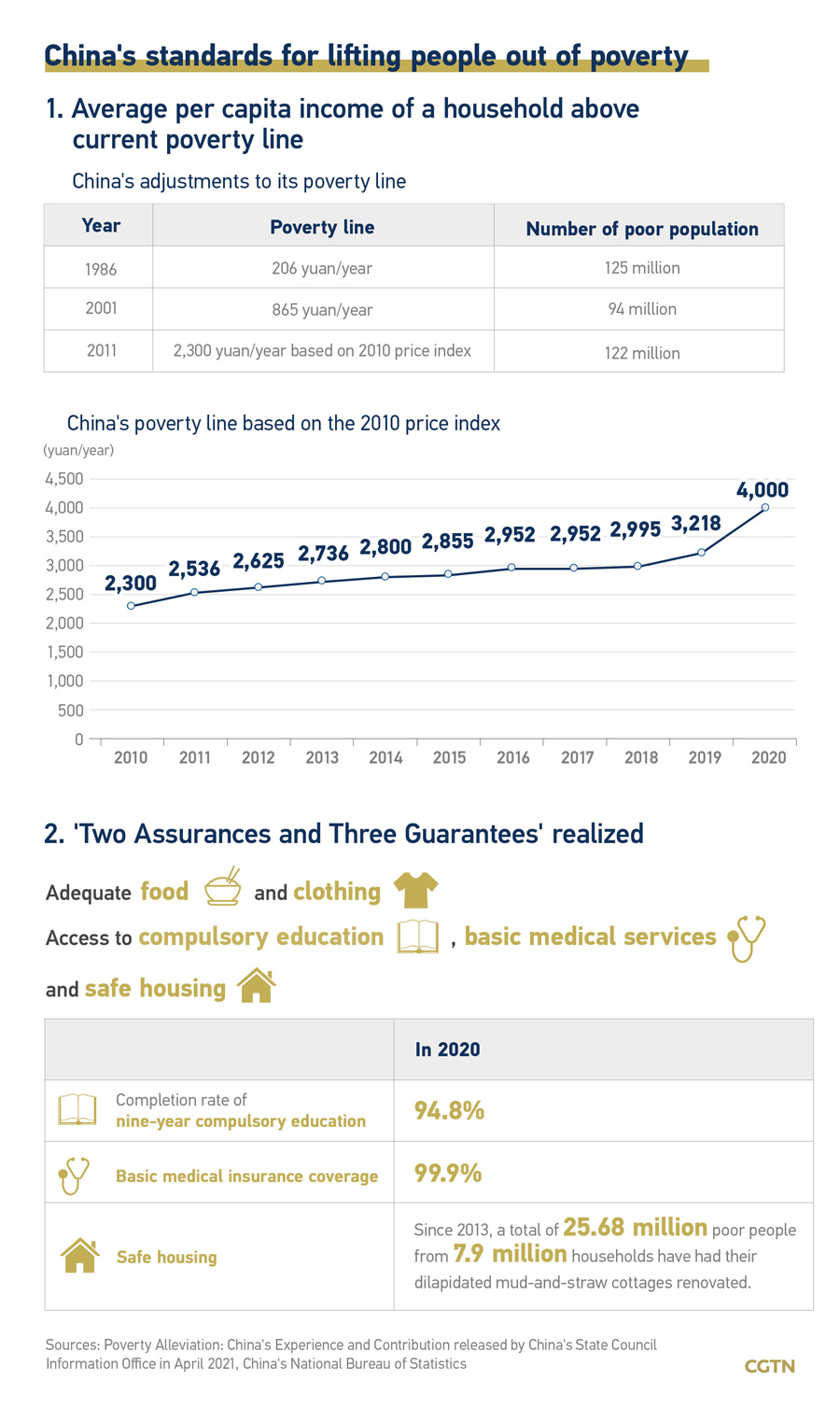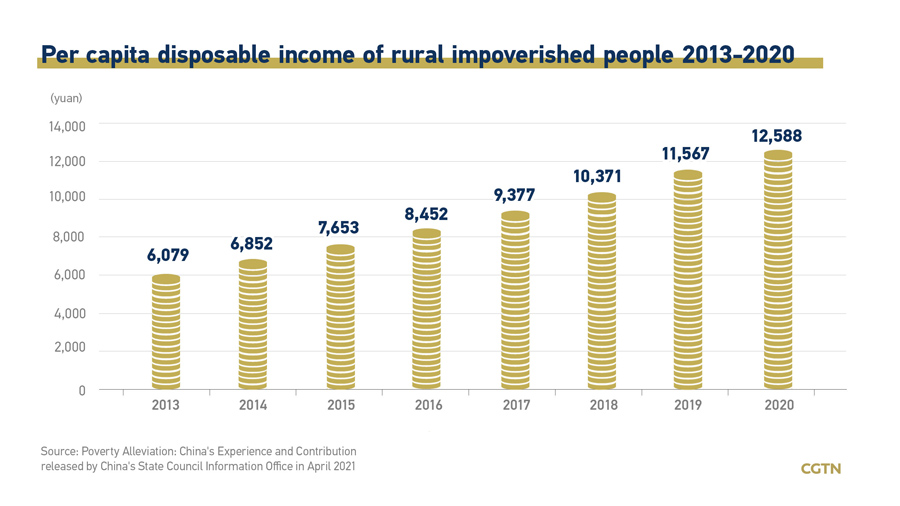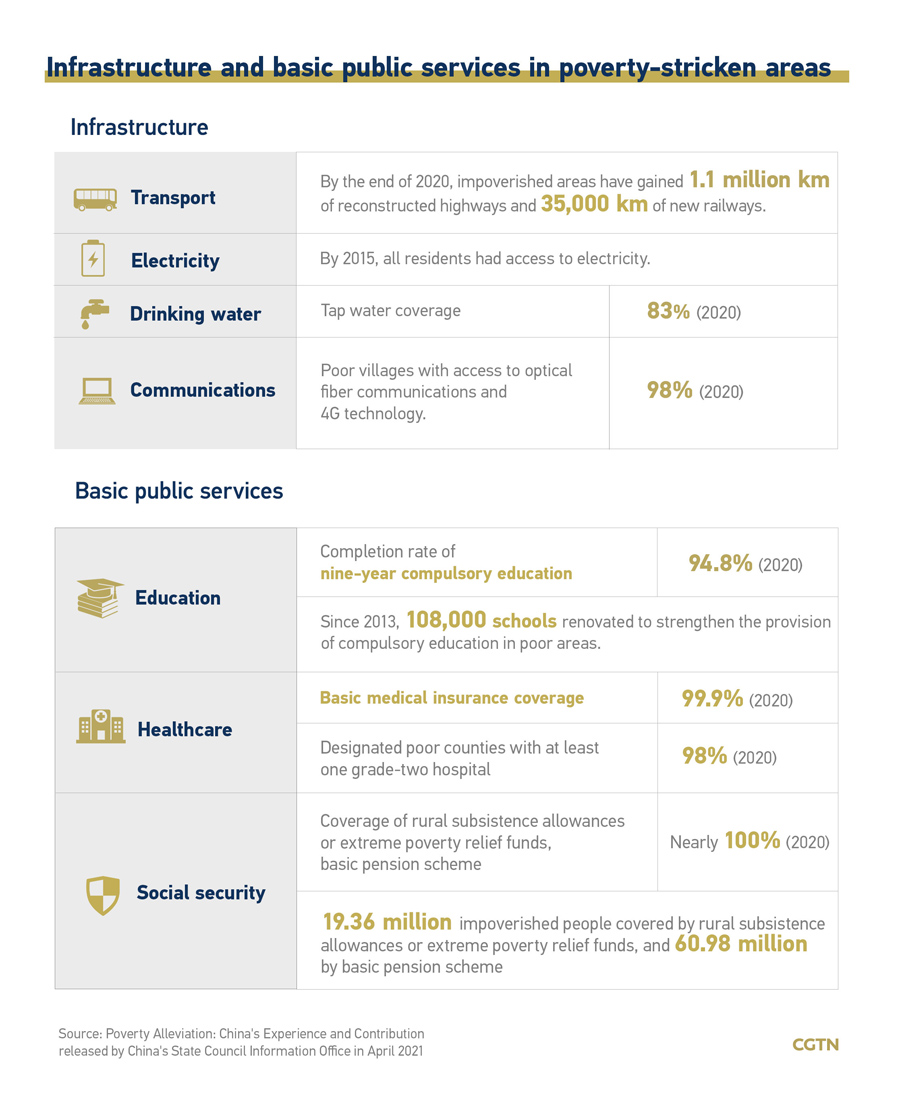Graphics: Explaining China's poverty alleviation efforts
China released a white paper on April 6 outlining the achievements in China's battle in eliminating extreme poverty, introducing China's approach and sharing its experience and initiatives in poverty alleviation.
At the end of 2020, China achieved the goal of eliminating extreme poverty – nearly 100 million people in rural areas who had lived below the poverty line all shook off poverty and all 832 designated poor counties, mostly in the central and western regions, were also out of poverty.

In 1986, China set its first poverty line in terms of yearly income at 206 yuan. In 2011, China readjusted the line to 2,300 yuan based on the 2010 price index. And the standard was adjusted over inflation to 4,000 yuan ($580) in 2020.
The criteria for lifting out of poverty also include what are called "two assurances and three guarantees," which require ensuring adequate food and clothing, and access to compulsory education, basic medical services and safe housing.

In 1986, China set its first poverty line in terms of yearly income at 206 yuan. In 2011, China readjusted the line to 2,300 yuan based on the 2010 price index. And the standard was adjusted over inflation to 4,000 yuan ($580) in 2020.
The criteria for lifting out of poverty also include what are called "two assurances and three guarantees," which require ensuring adequate food and clothing, and access to compulsory education, basic medical services and safe housing.

Access to transport, electricity, drinking water and communications has been improved, boosting the social and economic development in impoverished areas. China has also intensified efforts to improve basic public services covering education, healthcare and social security.

China's poverty alleviation efforts has led to a substantial improvement in the welfare of its poor population, mainly in rural areas. Not only have their basic needs been satisfied, and the provisions also laid the foundation for future development.
Graphics: Du Chenxin, Chen Yuyang
-
Xixi Wetland invites visitors to Huazhao Festival
March 25, 2025
-
Hangzhou sets standard for concert hosting
March 19, 2025
-
What is making Hangzhou the new tech powerhouse of China?
March 10, 2025
-
Inside Hangzhou: China's high-tech dream factory
March 12, 2025



